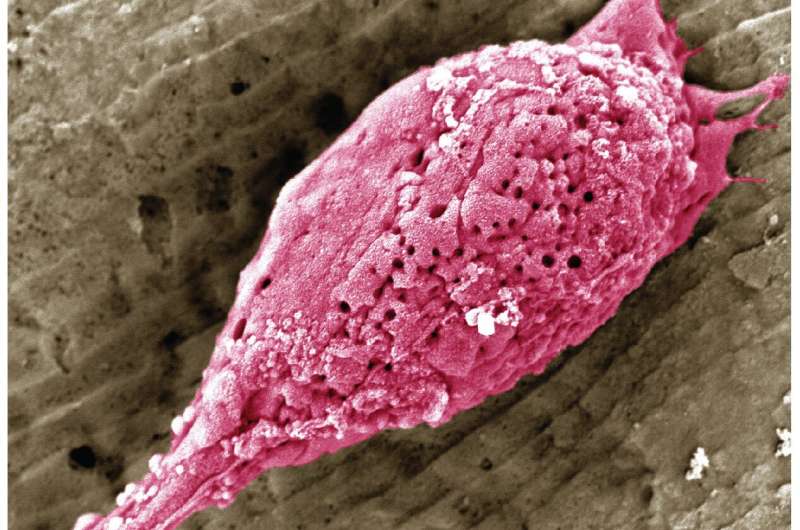This article has been reviewed according to Science X's editorial process and policies. Editors have highlighted the following attributes while ensuring the content's credibility:
fact-checked
trusted source
proofread
Team develops a non-allergenic wheat protein for growing better cultivated meat

As the world's population increases, cultivated or lab-grown meat—animal muscle and fat cells grown in laboratory conditions—has emerged as a potential way to satisfy future protein needs. And edible, inexpensive plant proteins could be used to grow these cell cultures. Now, researchers in ACS Biomaterials Science & Engineering report that the non-allergenic wheat protein glutenin successfully grew striated muscle layers and flat fat layers, which could be combined to produce meat-like textures.
Cultured cells need a base or scaffold to adhere to produce lab-grown meat. Plant proteins are appealing candidates for the scaffolds because they are edible, abundant and inexpensive. Previous researchers have shown that a plant-based film made of glutenin was a successful base to cultivate cow skeletal muscle cells. But for this technique to produce a promising meat-like alternative, the muscle cells need to form aligned fibers, similar to the texture in real tissues.
Additionally, fat needs to be included in the 3D structure to replicate the composition of traditional meat products. To take advantage of using glutenin, a protein in gluten that people with celiac disease or a gluten sensitivity don't typically react to, Ya Yao, John Yuen, Jr., Chunmei Li, David Kaplan and colleagues wanted to develop plant-based films with it to grow textured muscle cells and fatty layers.
The researchers isolated glutenin from wheat gluten and formed flat and ridge-patterned films. Then they deposited mouse cells that develop into skeletal muscle onto the protein bases and incubated the cell-covered films for two weeks. Cells grew and proliferated on both flat and ridged films. As expected, compared to cells grown on control films made of gelatin, the performance of the glutenin-based films was inferior but sufficient.
The researchers say further work must be done to improve how cells attach to the plant-based film to get closer to the growth on the animal-derived biomaterial. During the second week of the culture, the cells on the patterned film formed long parallel bundles, recreating the fiber structure of animal muscles.
In another test, mouse cells that produce fat tissues were deposited onto flat glutenin films. During the incubation period, as cells proliferated and differentiated, they produced visible lipid and collagen deposits.
The cultured meat and fat layers attached to the edible glutenin films could be stacked to form a 3D meat-like alternative protein. Because the glutenin material base supported the growth of both textured animal muscle and fat layers, the researchers say it could be used in an approach for more realistic cultivated meat products.
More information: Ya Yao et al, Cultivated Meat from Aligned Muscle Layers and Adipose Layers Formed from Glutenin Films, ACS Biomaterials Science & Engineering (2024). DOI: 10.1021/acsbiomaterials.3c01500
Provided by American Chemical Society




















